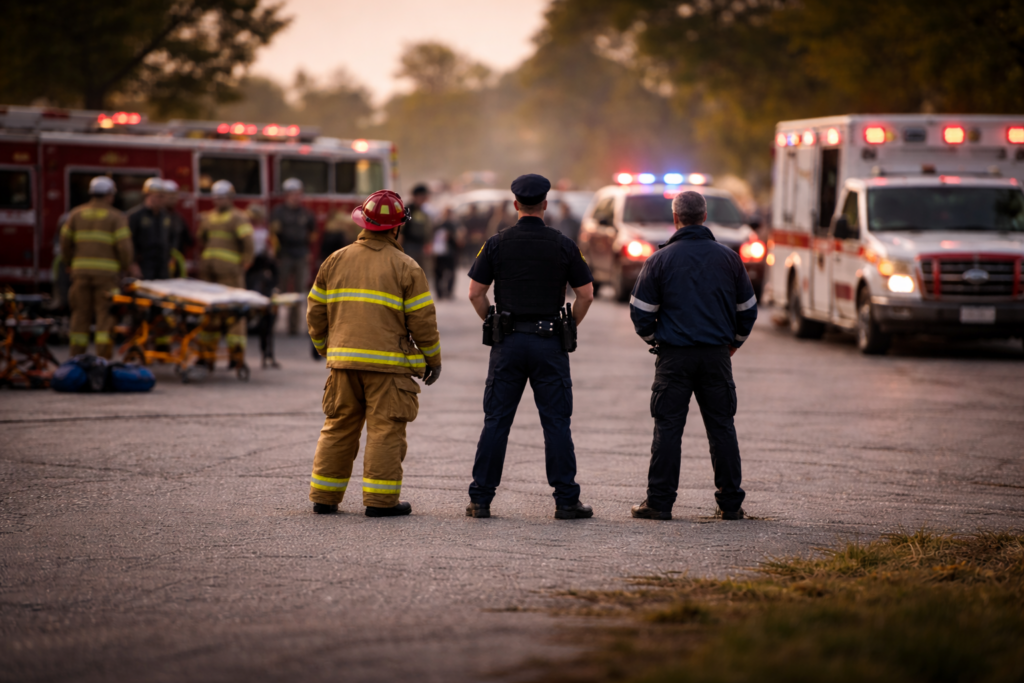Bias is an ugly word. For most of us, it conjures up the idea of racism or sexism. When we think of bias, we think of discrimination—the stuff of so many fire department lawsuits. But bias is a part of the fire service because it is a part of life. We are inherently biased. No one—no matter their gender, sexual identity, race or religion—can make the case that they approach life without biases.
Just because bias is universal, however, doesn’t mean we shrug our shoulders, accept it and move on. While not all biases are harmful, some are—and all biases limit our perception, which can have an impact on how we react to situations and people.
As fire service leaders, we must seek to better understand bias in the fire service, our personal biases, and how bias affects both personal and organizational decision-making.
Think of Bias as RPDM
Most of us are familiar with the concept of recognition-primed decision making (RPDM). As Lexipol co-founder Gordon Graham says, RPDM is like a hard drive on a computer. Gordon explains, “Your daily experiences help load this drive. Everything you do and experience is loaded into your hard drive. When you are involved in any task or incident, your magnificent brain quickly scans your hard drive and looks for a close match, aka a memory marker or a mental model or a behavioral script. When your brain finds a match that correlates with a positive outcome, it executes the stored behavior.”
Too often bias influences a decision early in the evaluation process and may prevent leaders from determining the best direction for the organization.
To get away from the inherently negative perception of bias, it can help to think of bias as a form of RPDM. Our bias is our “hard drive”—a set of experiences and values that affect how we perceive the world. Many times, that hard drive is great at making “matches” that serve us well in our decision making. But in the rush to make matches, our brains sometimes fail to perceive important information that could affect our decisions. Further, negative experiences tend to be more memorable, meaning we may be inclined to assume the worst when in fact the situation is more nuanced.
Examples of Bias in the Fire Service
So, we’ve established bias is much more than stereotyping people. To further expand our understanding, let’s look at a couple of examples of bias in the fire service specifically.
What color is a fire truck? Most of the American fire service comes to this discussion from a position of bias. Maybe where they grew up, fire trucks were red. But go to Mount Horeb, Wisconsin, and fire trucks are black. In some communities on the East Coast, fire trucks are emerald green. In my department, they’re lime green. So the question is not really, what color is a fire truck? But rather, what color is a fire truck to you? And depending on who you are and your emotional connection to fire trucks, you may feel very passionately about that, or maybe not so much. Regardless, your idea of what color a fire truck should be is a bias you bring to decisions—what crayon you pick up when your niece asks you to draw a fire truck for her, or whether you choose to repaint the refurb your department just purchased.
Another common bias in the fire service is that firefighter candidates need to be big, strong people. In fact, fire and EMS work is extremely varied and we often have a need for a full range of body types. And while brute strength is certainly an asset in some firefighting tasks, there are also numerous ways for a fire crew to accomplish specific tasks.
Another example I have witnessed many times is the belief that everyone should come into the fire service knowing how to operate a chainsaw on their first day. How many company officers have jumped to the conclusion that the rookie won’t amount to anything because they don’t know how to start the saw?
Using Knowledge of Bias for Conflict Resolution
Now that we’ve broadened our understanding of bias in the fire service and identified some common examples of it—beyond the usual idea that bias is always about race, sex, religion, etc.—we need to start thinking about how we can use this knowledge.
Understanding bias is essential for conflict resolution. When you have a conflict, you need to understand where the person you’re in conflict with is at. Without that, there’s no way to find common ground.
Just because bias is universal doesn’t mean we shrug our shoulders, accept it and move on.
One common place this arises in the fire service is with policy infractions. Most departments do a good job training personnel on tactics. This can lead supervisors to conclude their personnel know the department policies too—without taking the time to check knowledge. But when policy infractions occur, it’s the same response almost every time: “Geez Chief, I didn’t know.” Without stopping to consider that firefighter’s perspective, you may be inclined to write them off as a troublemaker. And they may write you off as a taskmaster when you impose discipline. When you both take the time to consider what’s influencing each other’s actions, it can help you get at the root of the conflict: The firefighter wasn’t taught the policy (policy acknowledgment is not the same as mastery). And that in turn points to a natural solution.
Using Knowledge of Bias for Strategic Decision Making
Finally, let’s consider the role bias plays in organizational decisions. Fire service leaders are frequently asked to make decisions that set the future direction for the organization. Individual bias can easily cloud those decisions. This bias can range from “it’s too hard” to “it’s too expensive” and everywhere in between.
Let’s take the example of online training. Many fire chiefs and instructors I meet have a personal bias against online learning. This makes sense; leaders have more tenure (read: we’re older!) and online training wasn’t widespread when we entered the fire service. We learned in person, hands-on, so it’s natural we would want the same for the people we’re training.
But anyone under the age of 35 has spent very little time learning from a textbook. So a blended learning approach—reserving in-person training for tactical proficiency and using online training to build knowledge and cover non-tactical components—is often more effective for today’s firefighters. Rather than forcing students to come to where the instructor is at, we need to overcome our personal biases and move to where the students are.
While bias can be an aid in organizational decision making, too often it influences a decision early in the evaluation process and may prevent leaders from determining the best direction for the organization.
Common Ground
The important takeaway here is that bias is a fact of the American fire service, both positive and negative. As leaders, we need to be self-aware and acknowledge our own biases as much as possible, but also push ourselves to think more deeply about what may be influencing other people’s actions.
Equally important, we need to acknowledge that biases are not immutable and commit to moving beyond them. Each of us who serves gets to decide how we deal with bias—both our own and other people’s. We can have differences of opinion and background, but the way we move forward is to embrace those differences and still find the common ground.


